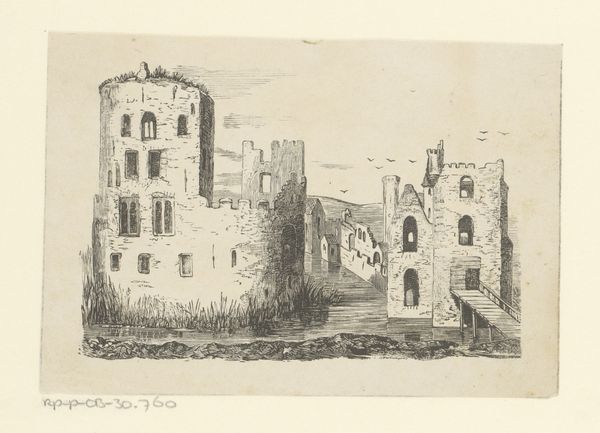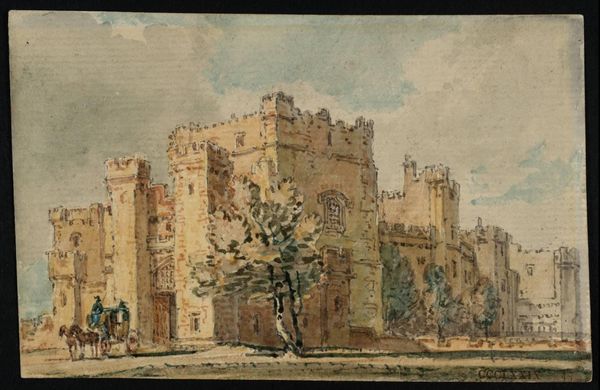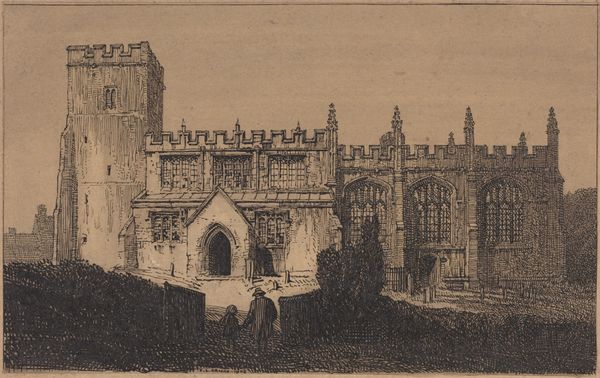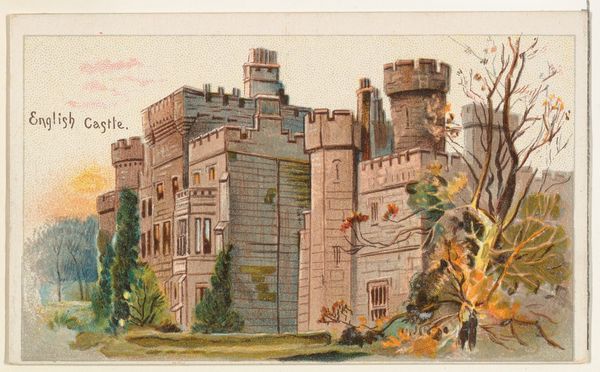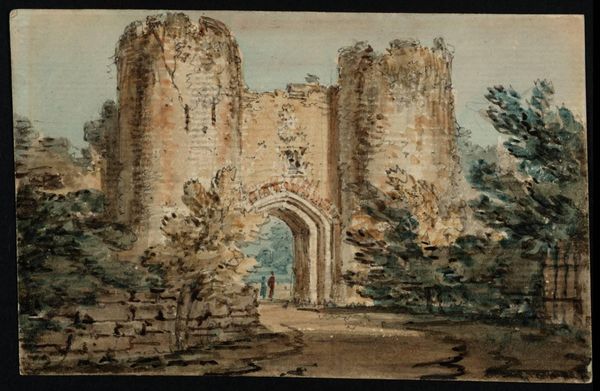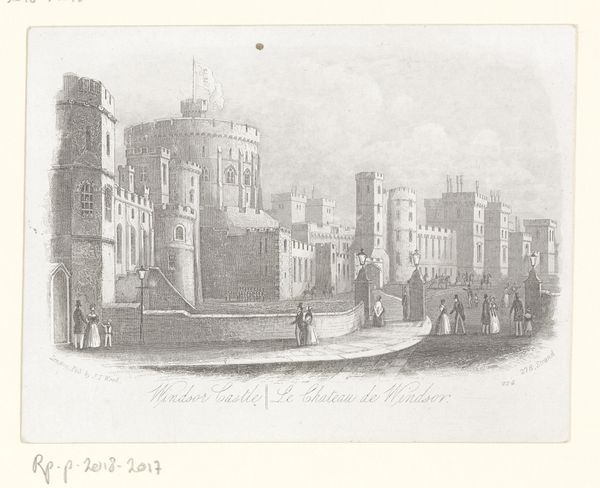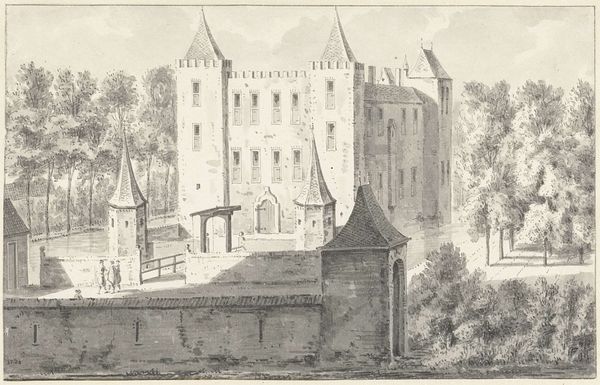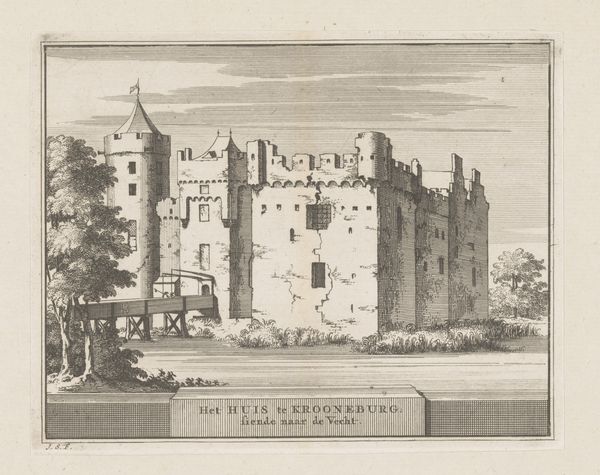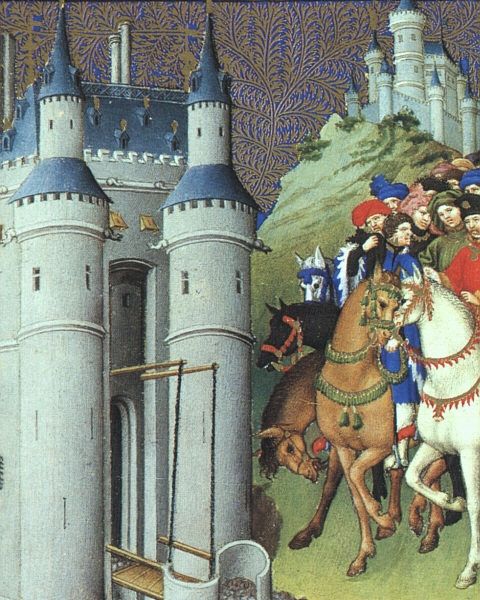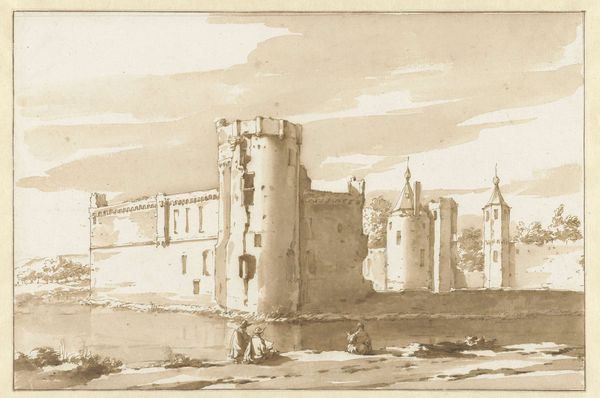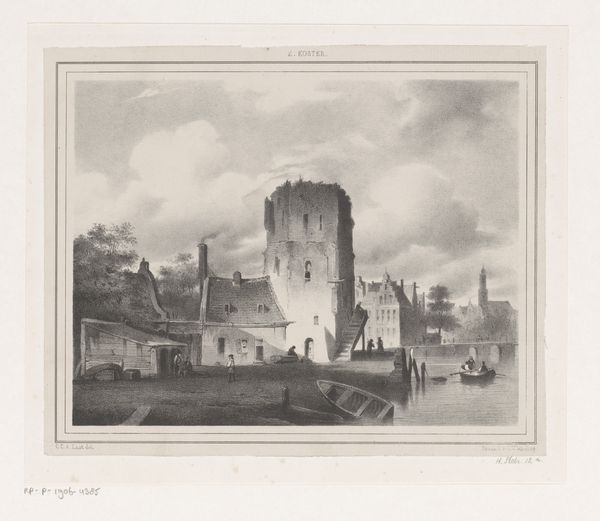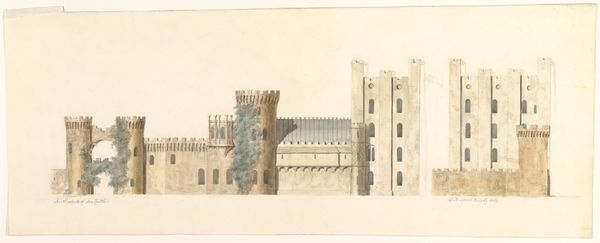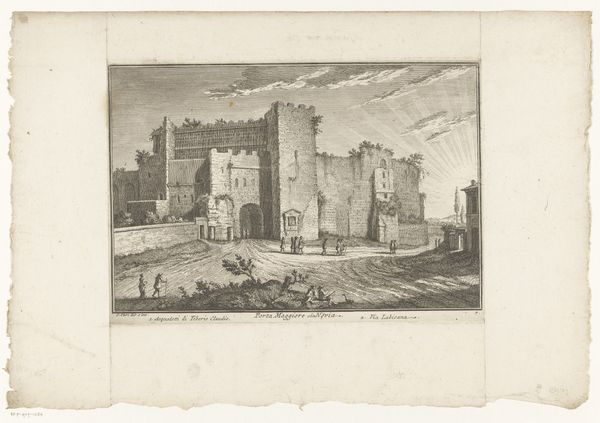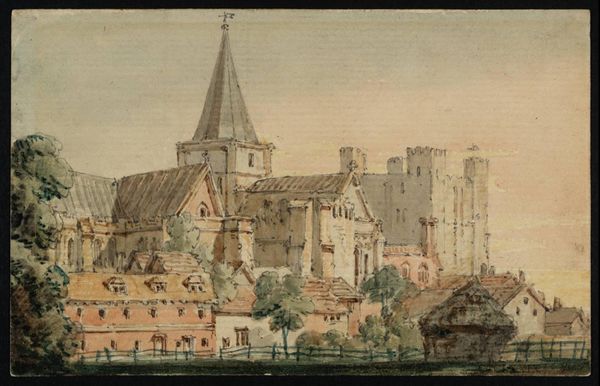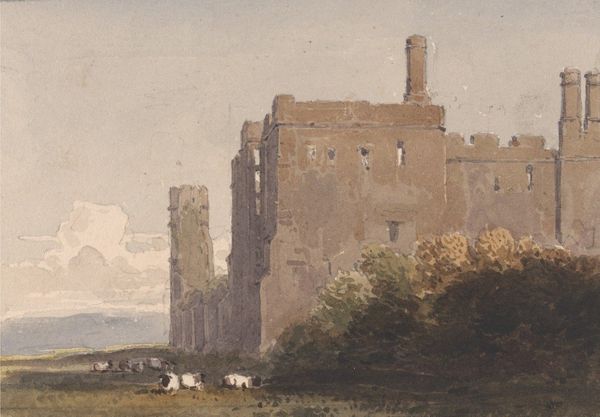
architecture
#
medieval
#
landscape
#
romanesque
#
history-painting
#
architecture
#
historical building
Copyright: Public domain
Curator: Standing before us is the White Tower, the original keep of the Tower of London, an example of Romanesque architecture, constructed in 1078. Editor: It’s undeniably imposing. The scale alone makes you feel like you are gazing upon something from another age, almost prehistoric in its permanence. All that pale stone rising towards the sky, those small windows like watchful eyes. Curator: Commissioned by William the Conqueror, its construction served to assert Norman power and control over London after the conquest of England. The Tower wasn't just a castle, it was designed to intimidate and dominate. Editor: Exactly. And its location along the Thames River also signifies power – controlling movement and trade. You can see how deeply intertwined architecture is with displays of authority and social order, literally built with stone and intimidation. Curator: Absolutely, its historical function has been layered: from royal residence to armory, to a prison. Its walls witnessed countless power struggles and political intrigues. The Tower even played a part in defining social hierarchies, functioning for some as home while for others as a death sentence. Editor: Which really highlights how architecture, particularly buildings of this nature, acts as a stage for history. The cold, unyielding stonework would have been the last thing many political prisoners would have seen. I think the architecture tells stories that extend far beyond aesthetic choices. The Tower challenges us to consider issues surrounding social control, authority, and narratives of historical events and power struggles. Curator: Considering how much it’s been altered and added to over the centuries, that original Norman core still makes an incredibly bold statement about the projection of power. Its image has been co-opted and reinterpreted countless times to project power for both the monarchy and Great Britain throughout time. Editor: The building speaks volumes, even today, of how architecture participates in complex systems that underpin issues related to identity, politics and gender, too. Thanks for putting it in such a rich and historical context. Curator: And thank you for adding that layer of modern discourse that helps us consider not just how the building was, but how we read and experience it today.
Comments
No comments
Be the first to comment and join the conversation on the ultimate creative platform.
